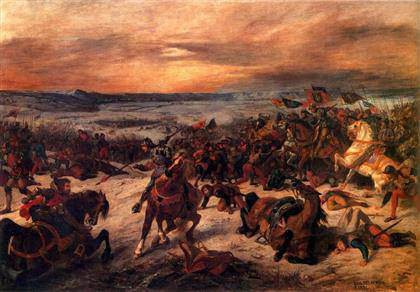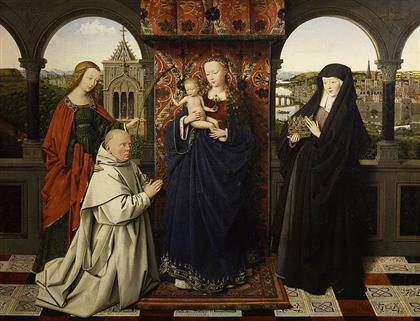
Eugène Delacroix: “The Battle of Nancy” (1831)
Delacroix: exhibition at the Metropolitan Museum ‘Delacroix’ is the first comprehensive retrospective in North America devoted to the artist. Exhibition allows visitors to discover a protean genius who continues to set the bar for artists today. Metropolitan Museum of Art, September 17, 2018 – January 6, 2019.]]>
Source: Metropolitan Museumof Art
The exhibition features the three main phases of Delacroix’s career, which spanned more than four decades. The first section will be devoted to his formative years during the 1820s, when his ambitious paintings exhibited at the annual Paris Salons won him public recognition. The second section is focused on his exploration of historical themes, often on a grand scale, informed by public commissions from the 1830s onward. The third section presents an overview of the artist’s final years, marked by his triumph at the Universal Exposition of 1855 and his growing interest in nature.
The presentation enables visitors to explore the diversity of themes that preoccupied Eugène Delacroix throughout his life. For example, he engaged with the art of the past; had a lifelong fascination with literary, historical, and biblical themes; and made transformative contributions to printmaking and book illustration. The exhibition spotlights Delacroix’s interest in the world beyond Europe, including his own epochal voyage to North Africa in 1832. The variety of works reveals Delacroix’s creative process and his progressive mastery of materials, including oil paint, watercolor, and graphic media.
Among the highlights will be Delacroix’s landmark works such as “Greece on the Ruins of Missolonghi” (1826), “The Battle of Nancy” (1831), and “Women of Algiers in Their Apartment” (1834). Visitors have the first opportunity in a generation to examine closely “Christ in the Garden of Olives” (1824–27), removed from its perch high on the wall of the Parisian church of Saint-Paul-Saint-Louis and cleaned especially for the exhibition. Delacroix’s genius as a lithographer is demonstrated in the 1828 French edition of Goethe’s Faust.
Related content
Eugène Delacroix: “Liberty leading the people”
Follow us on:


